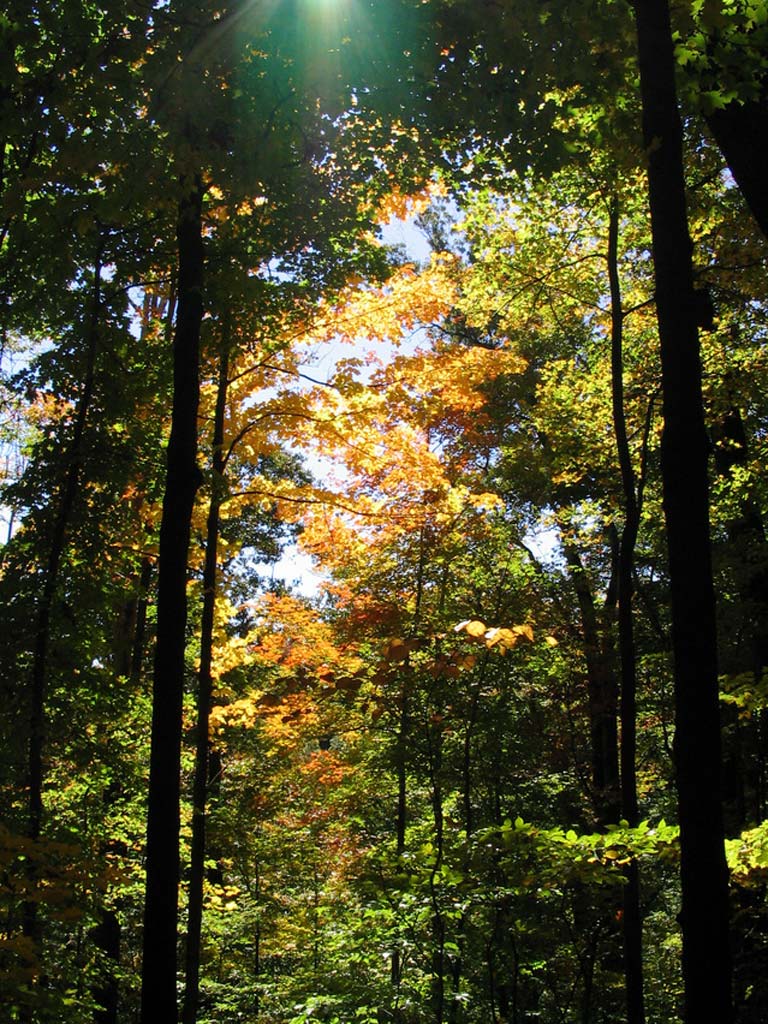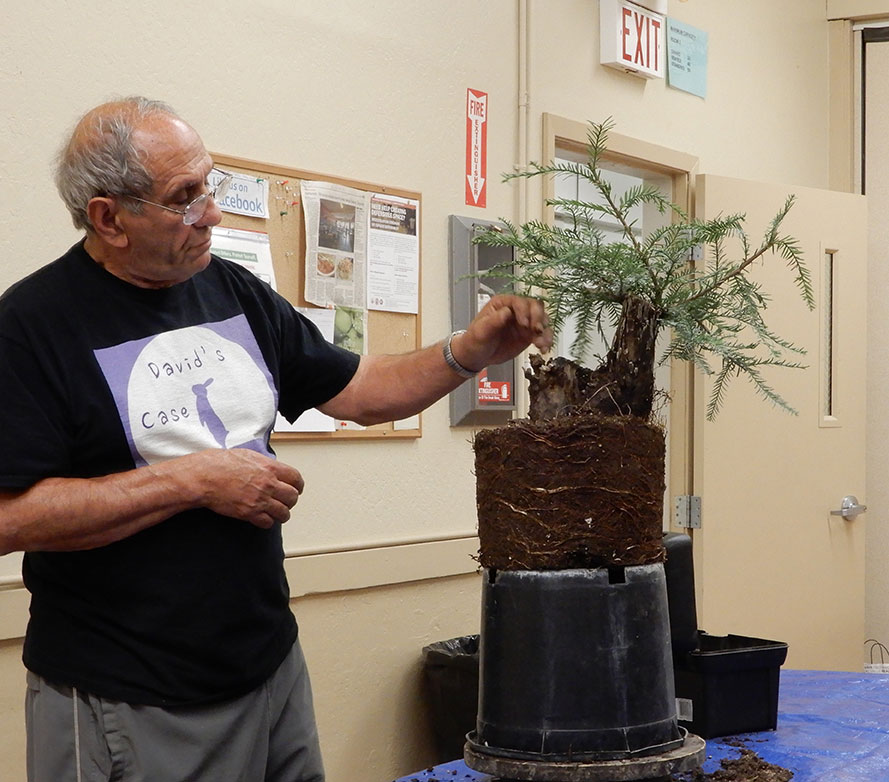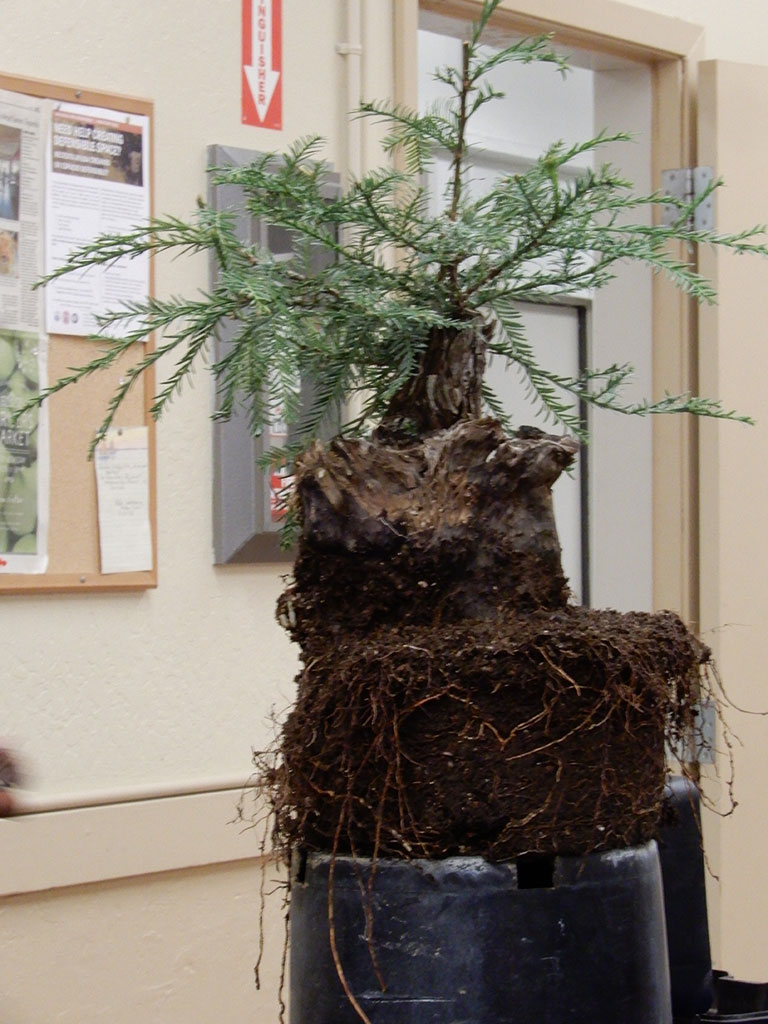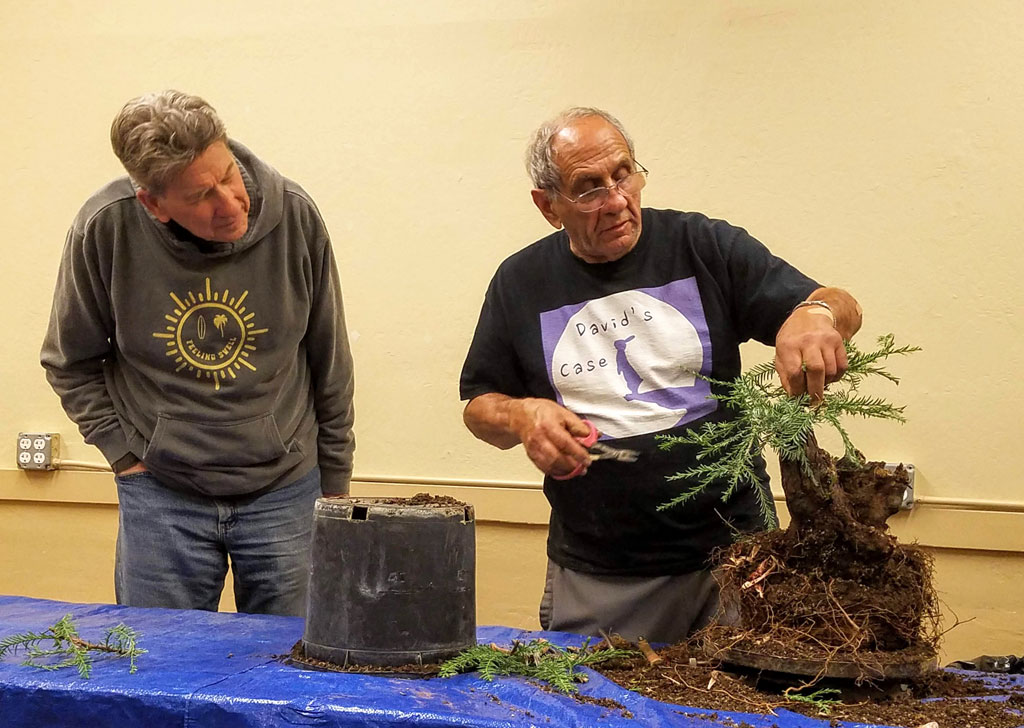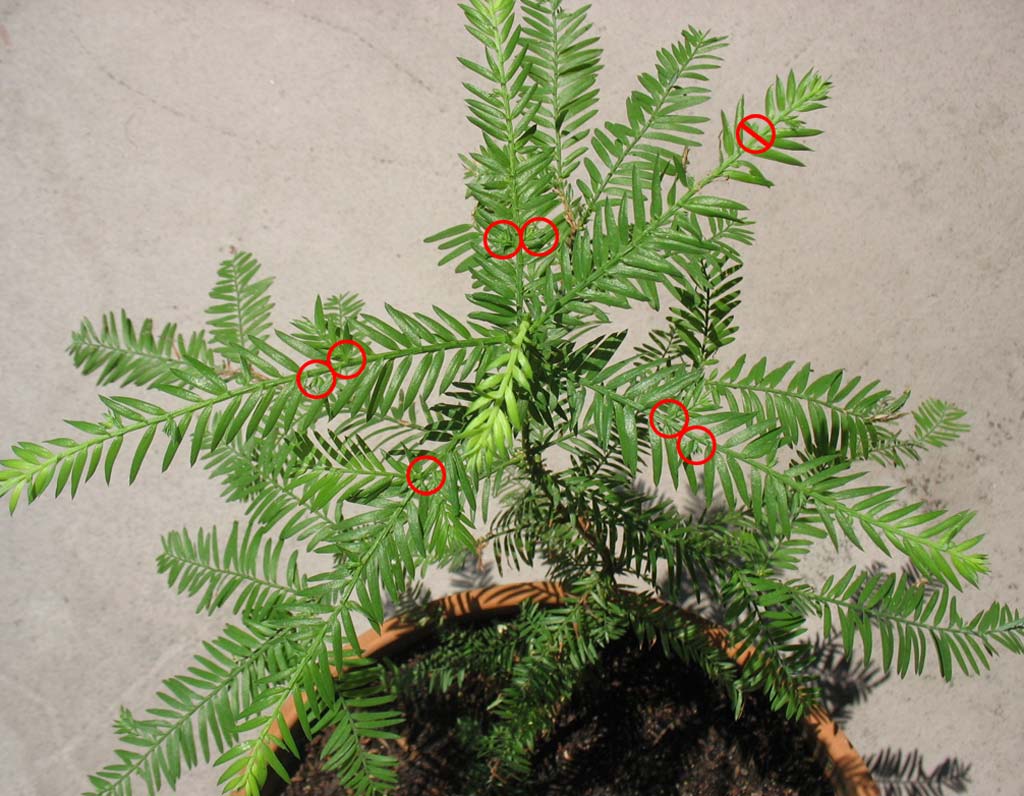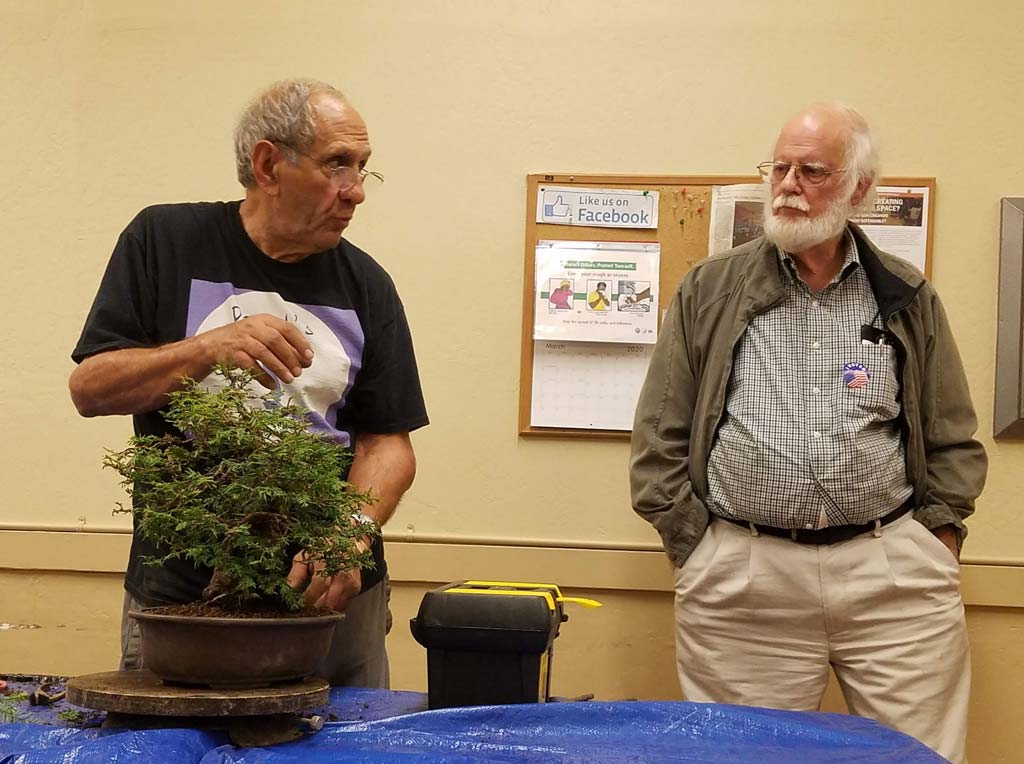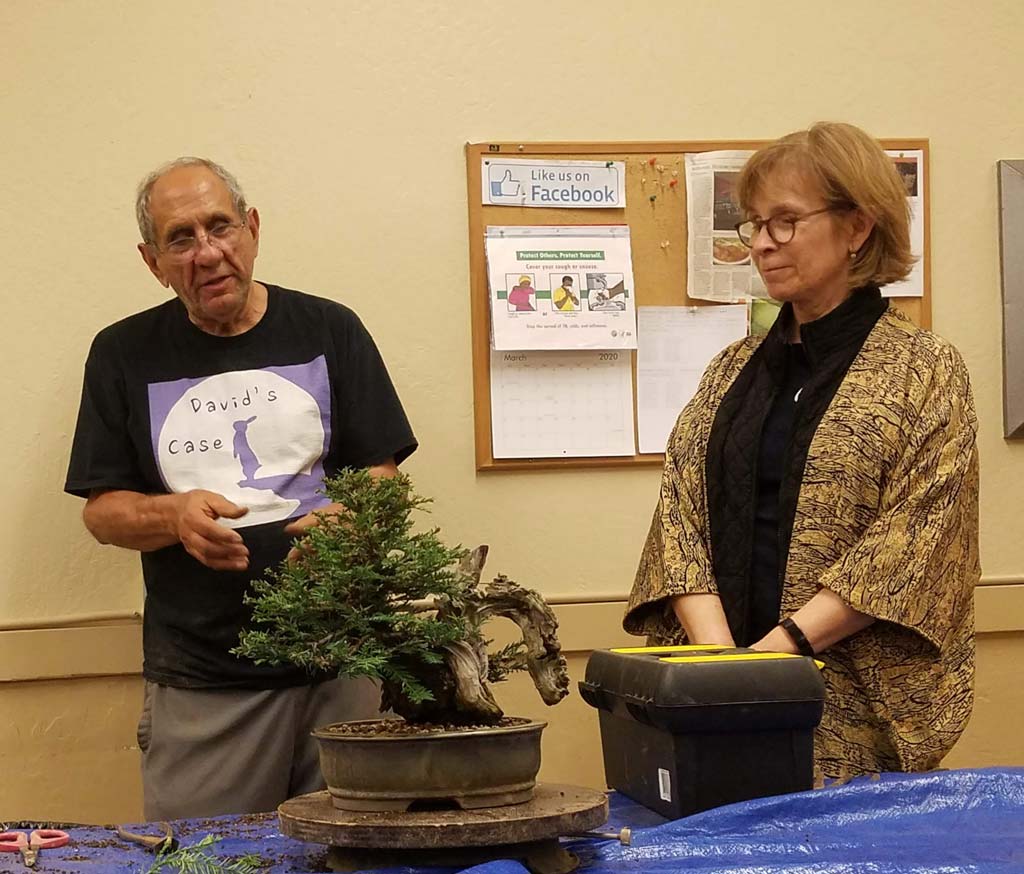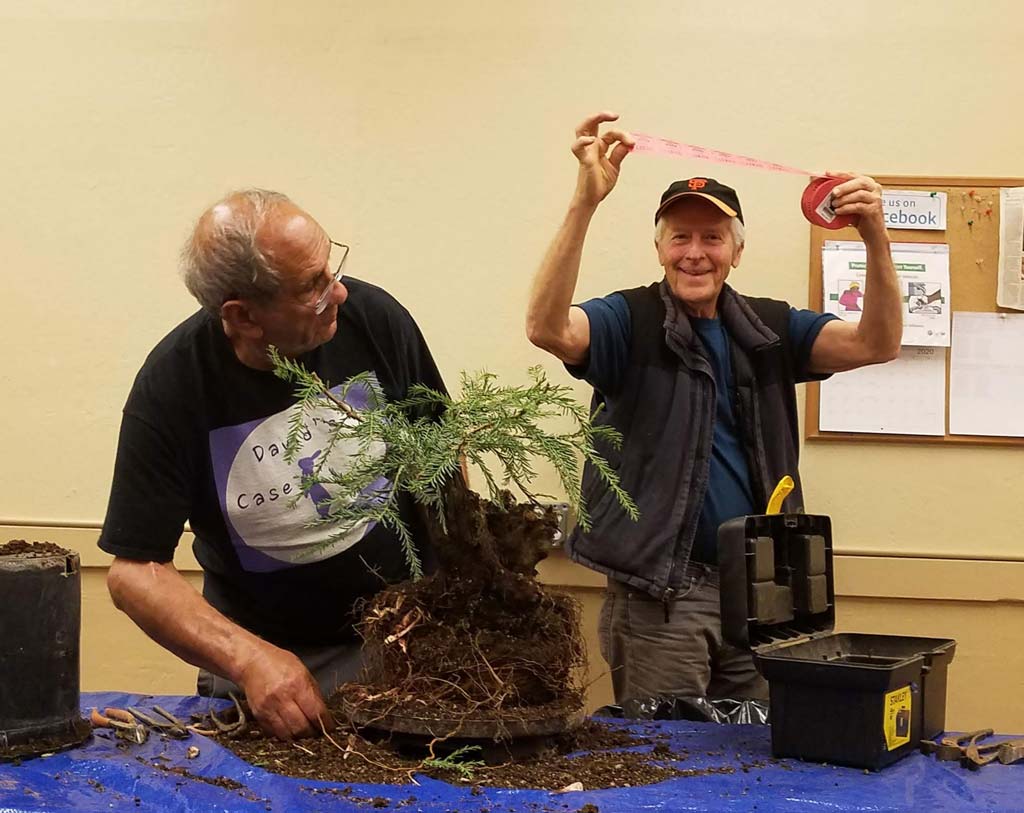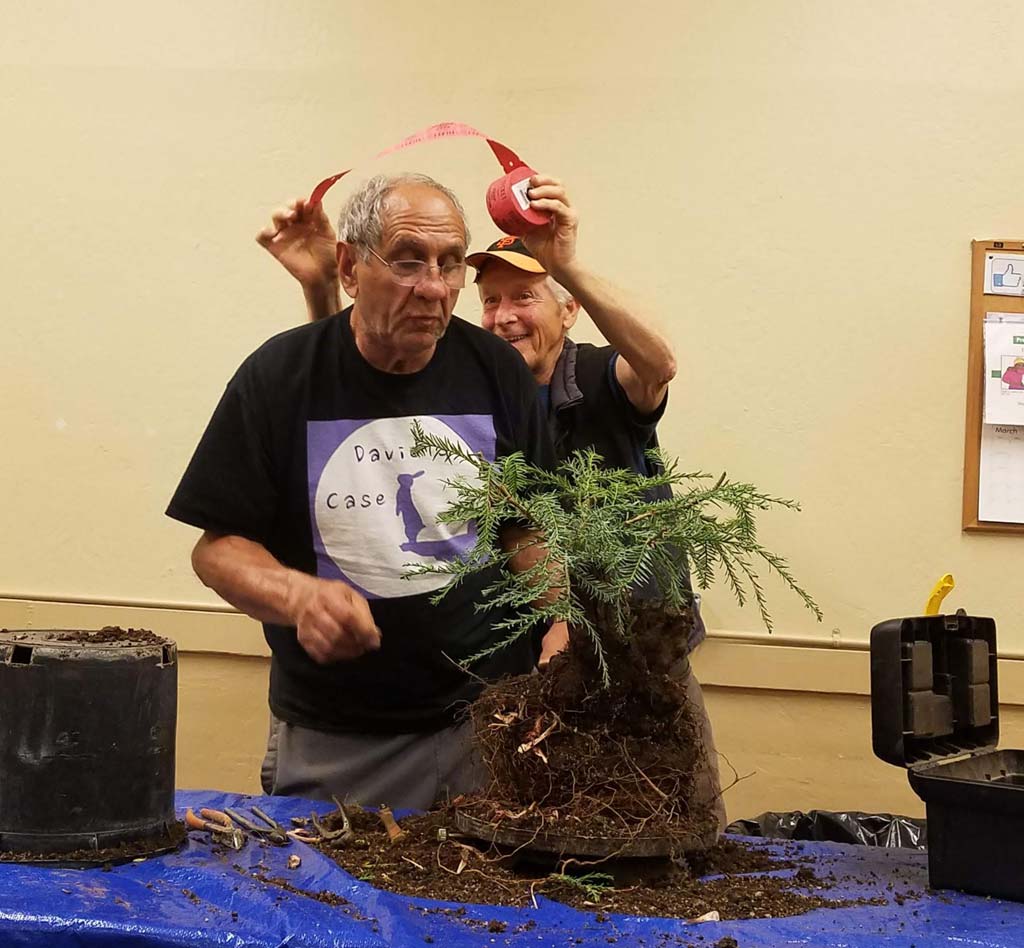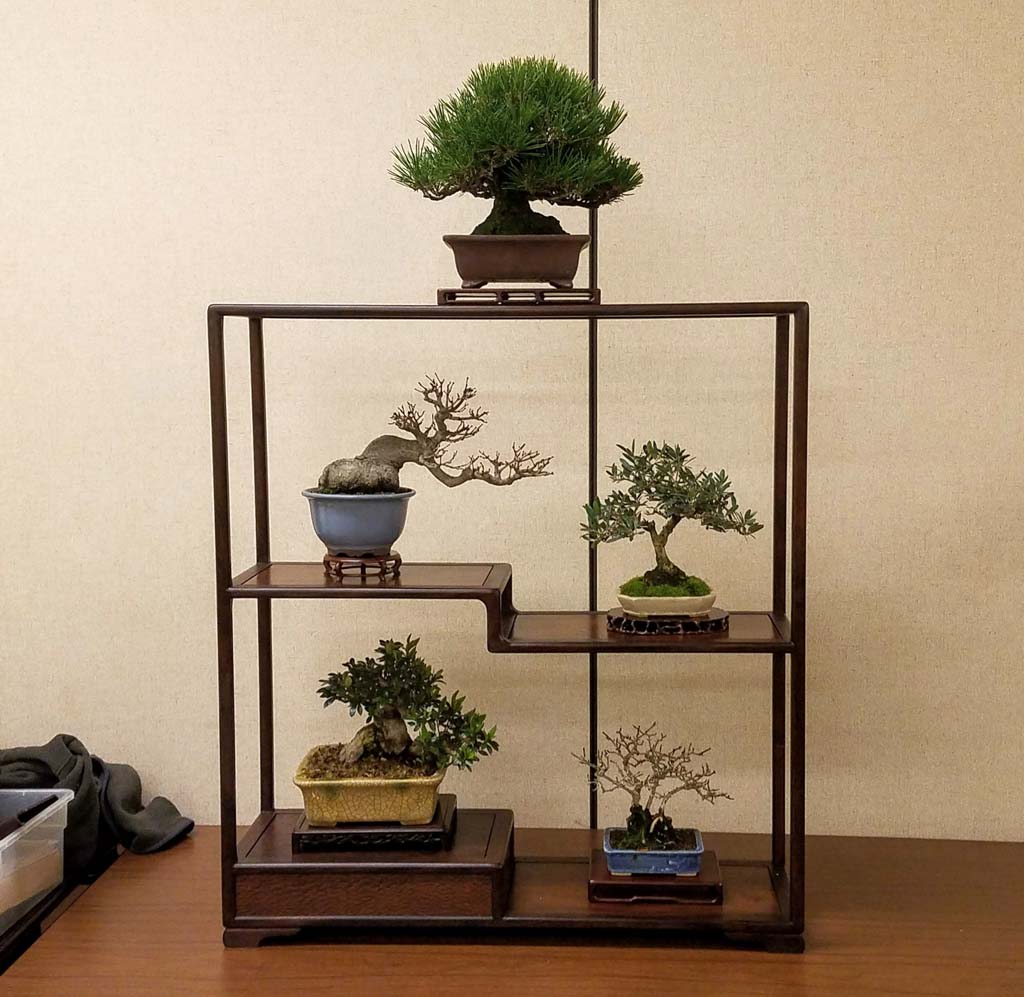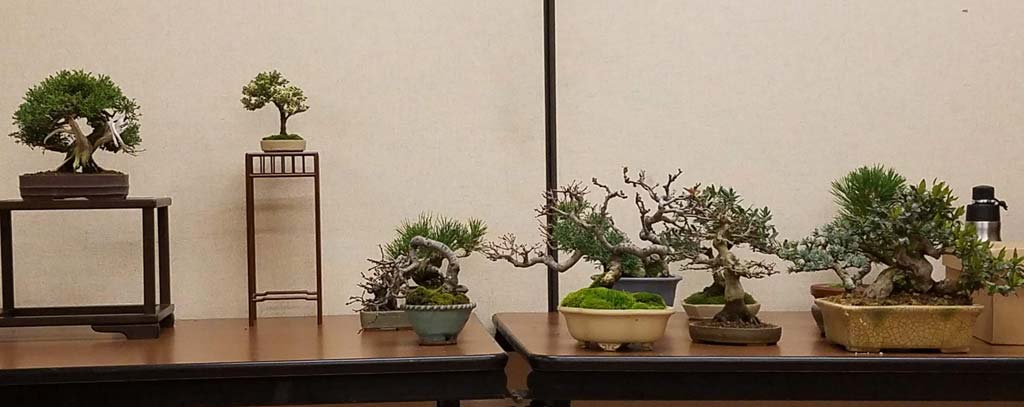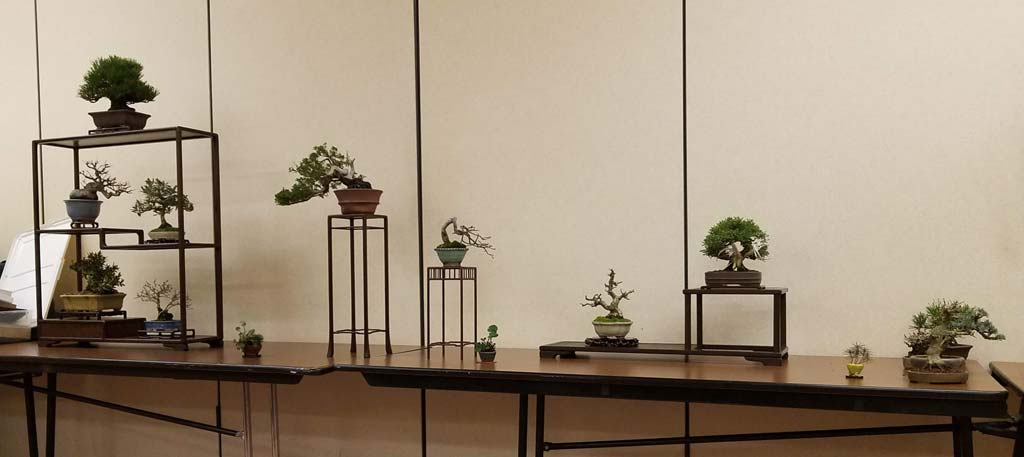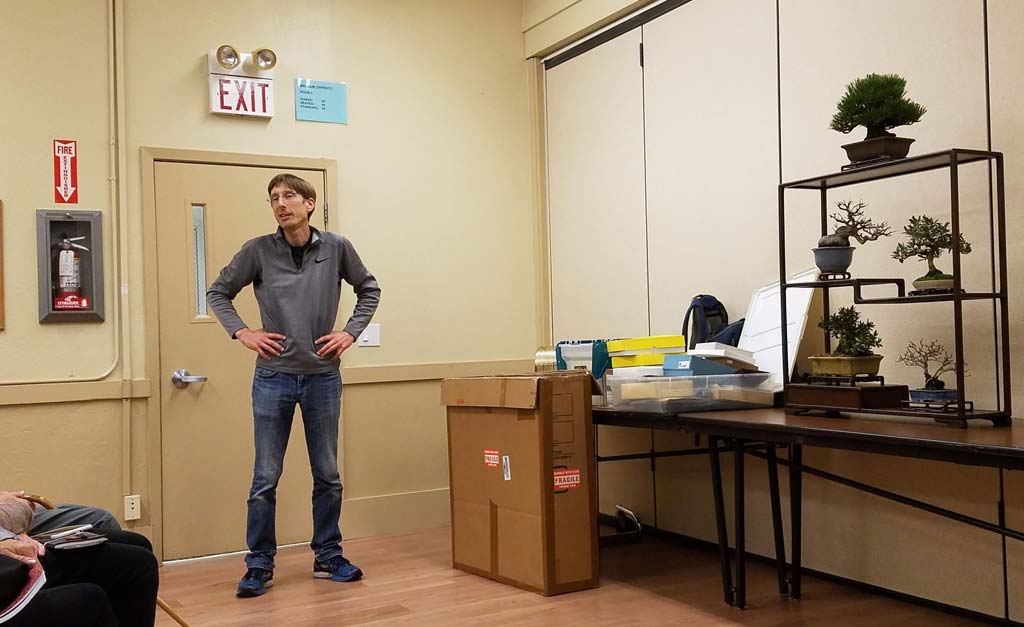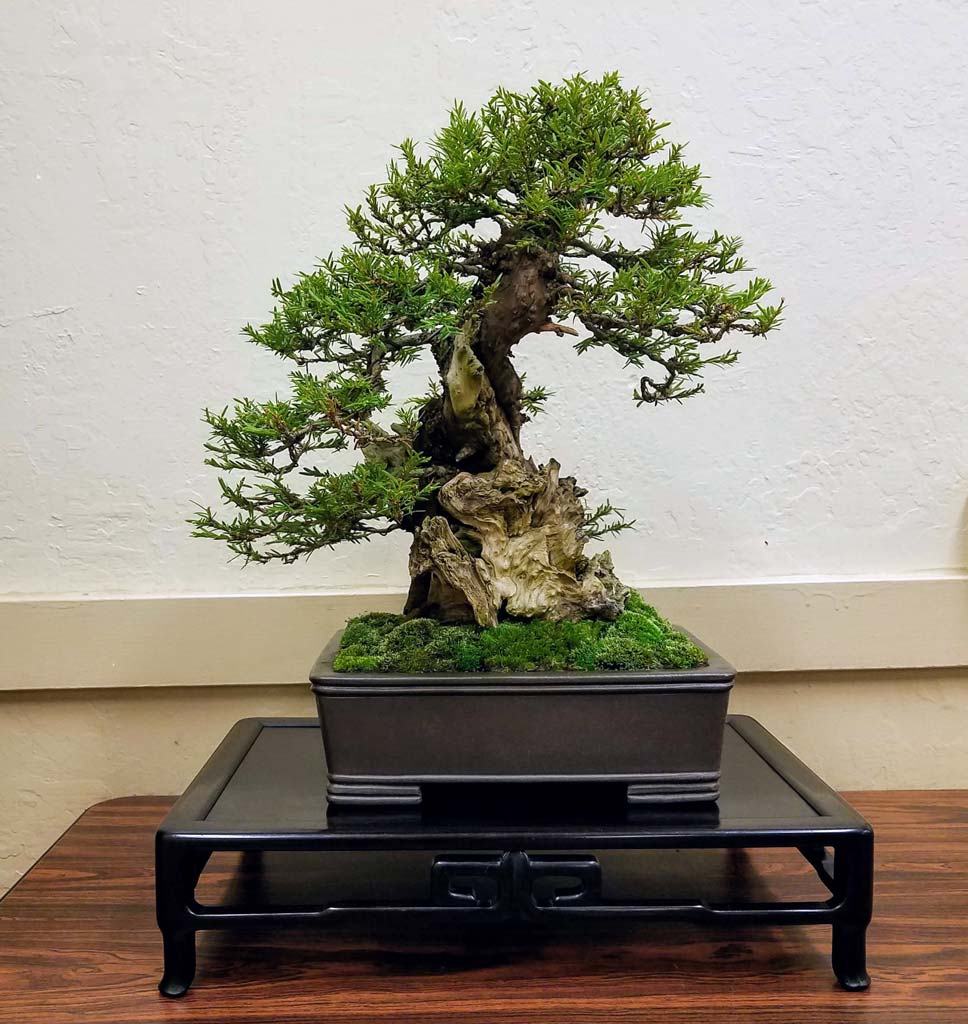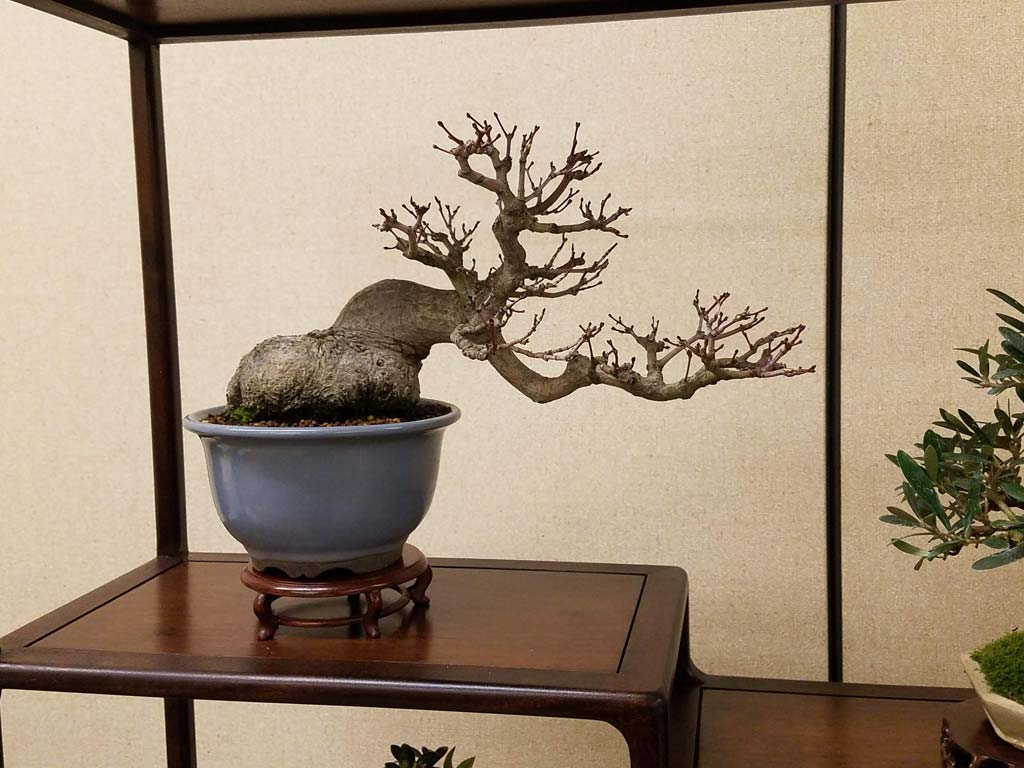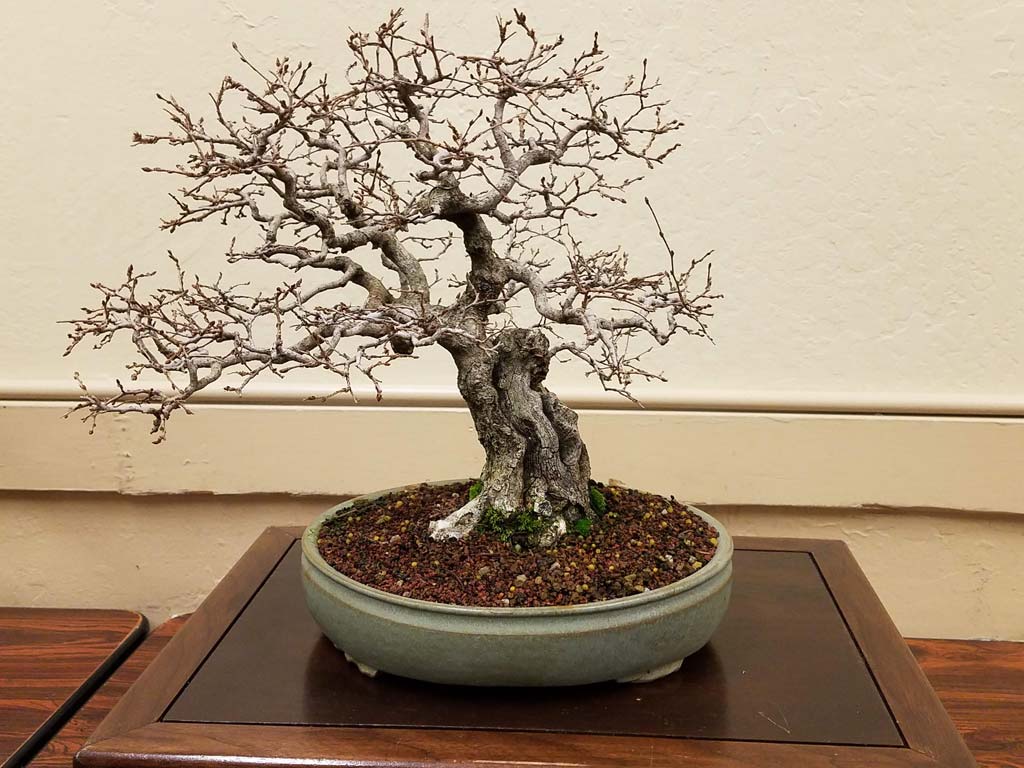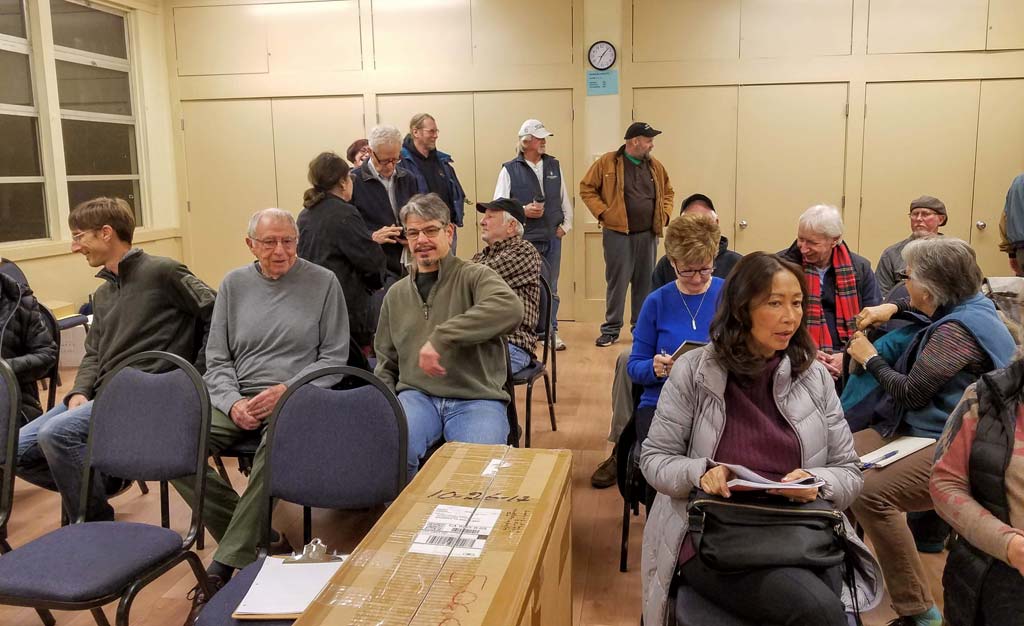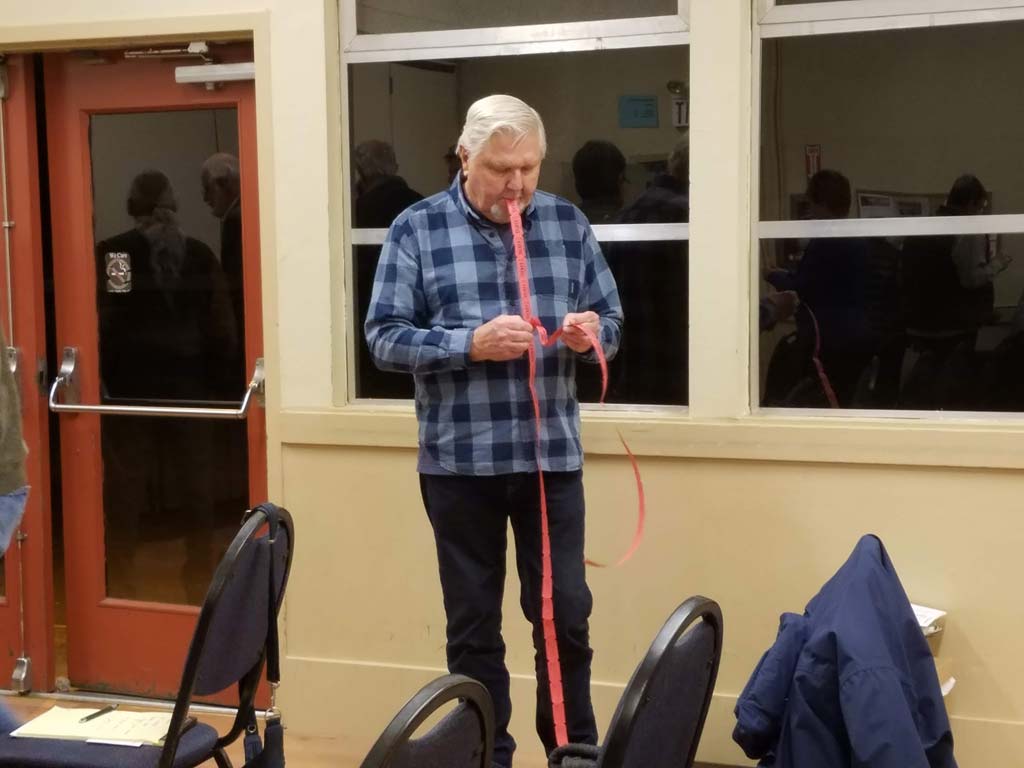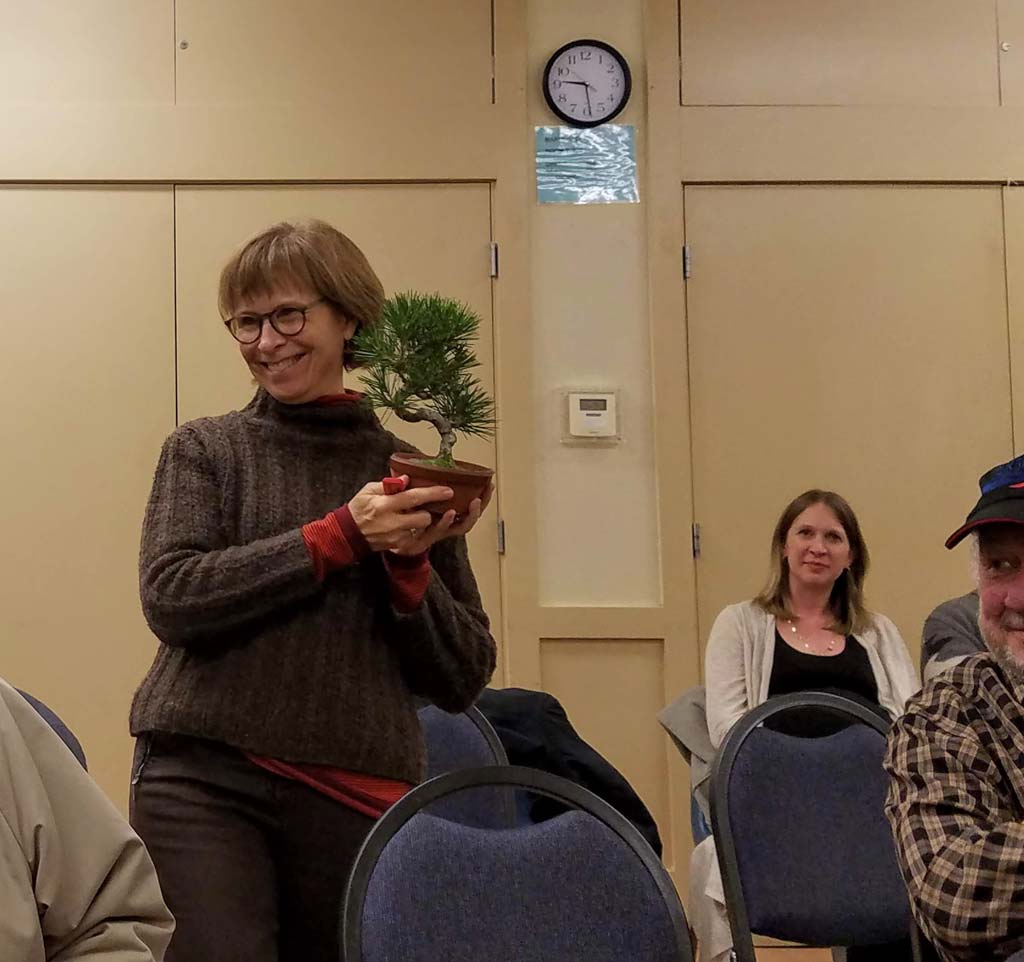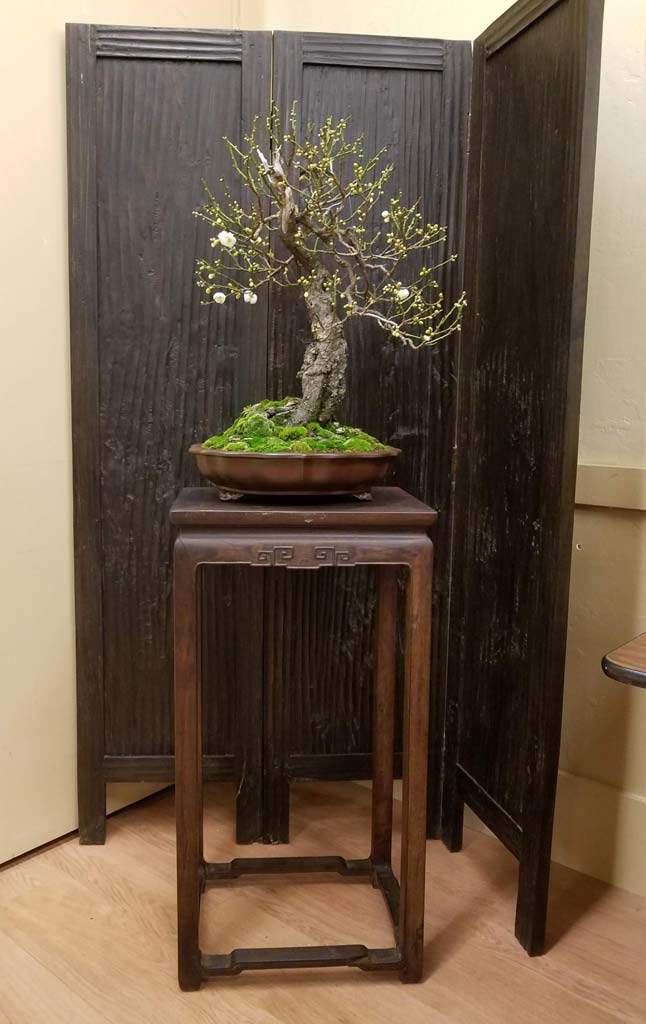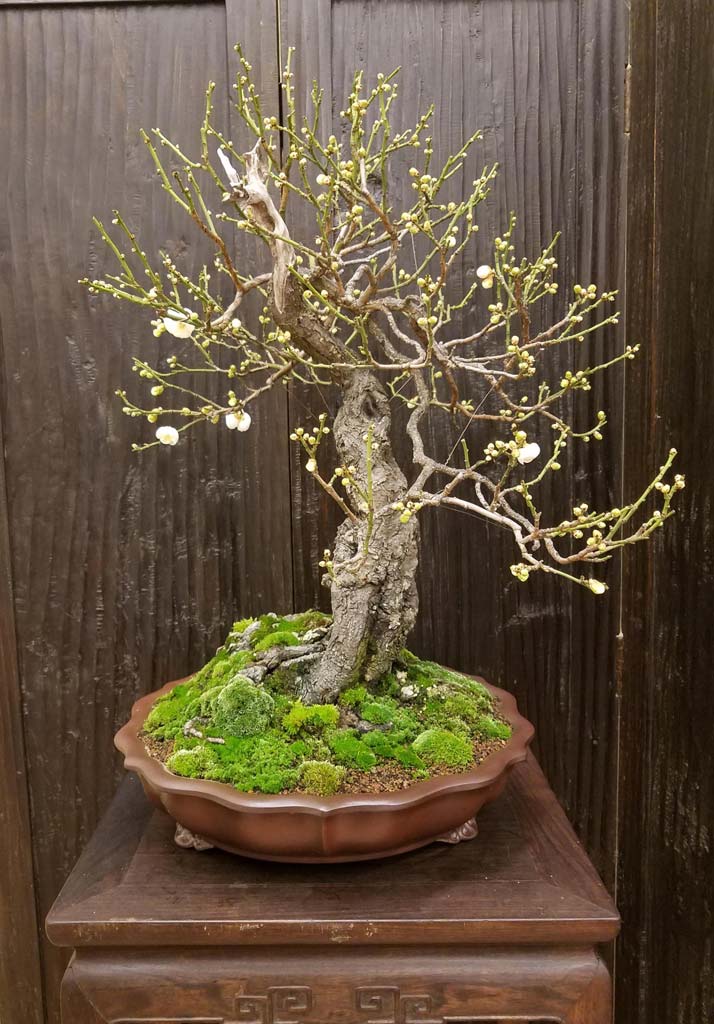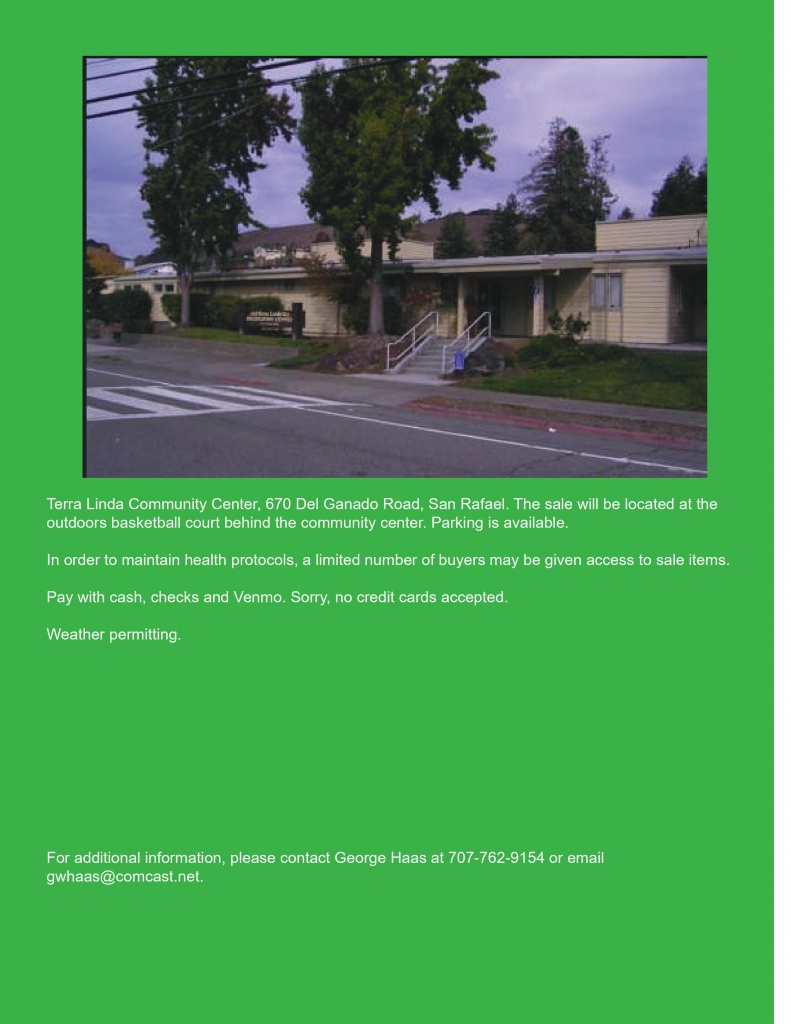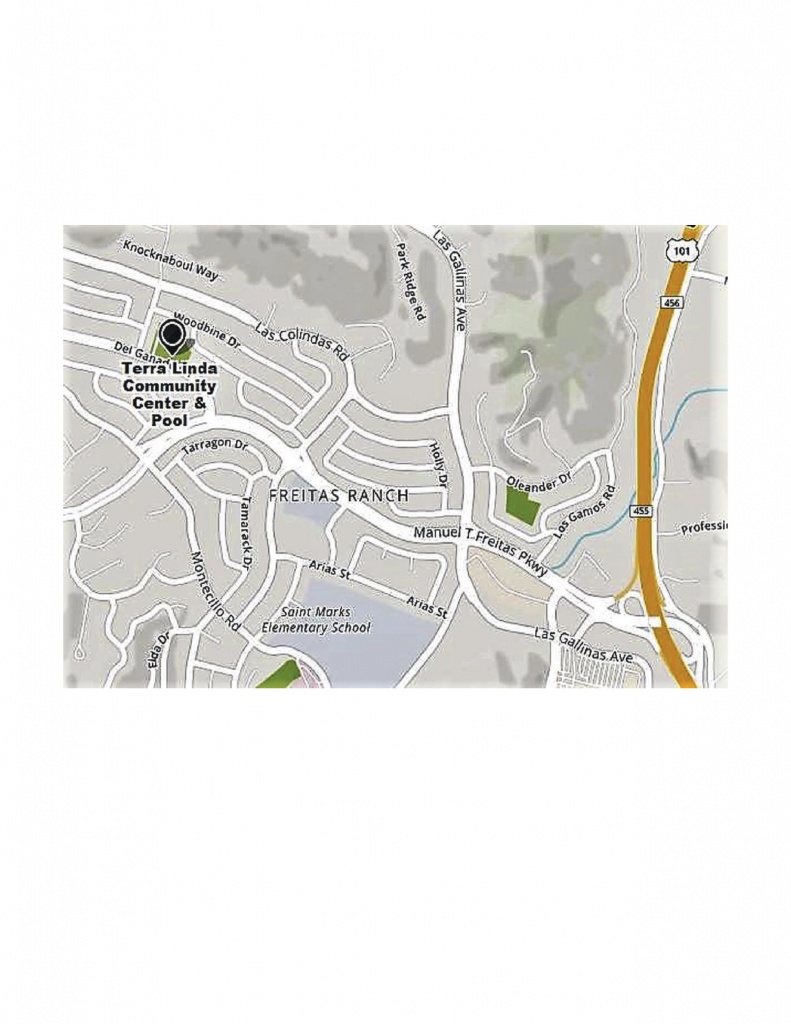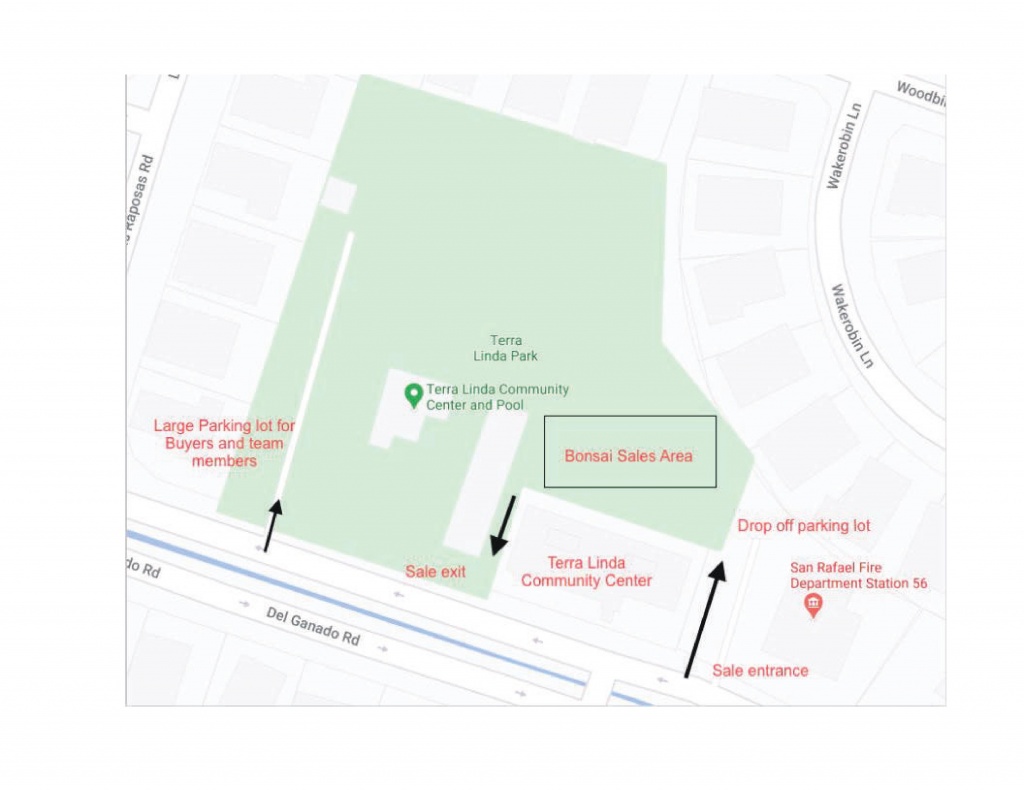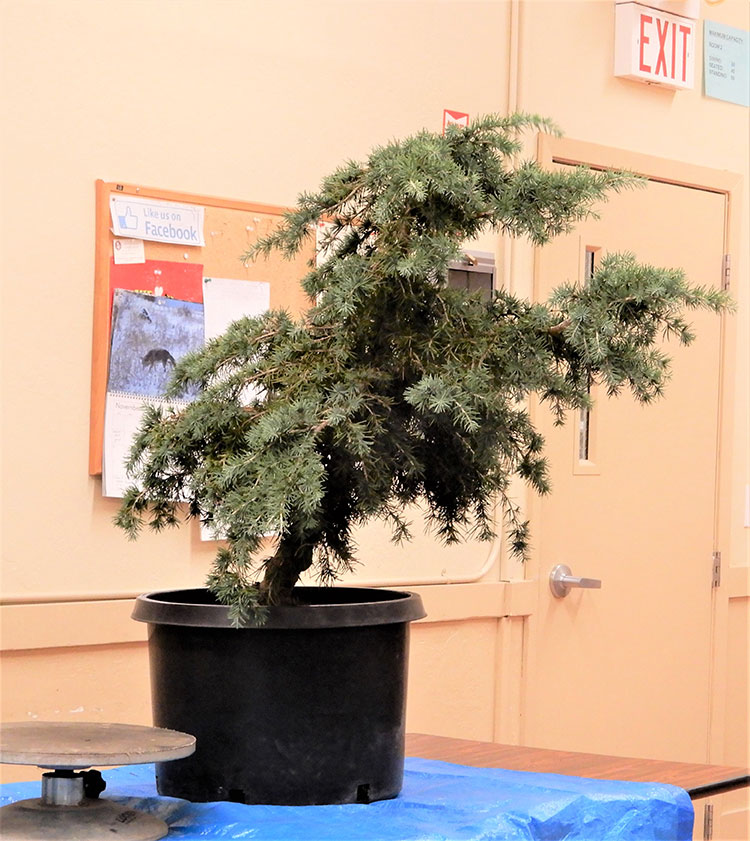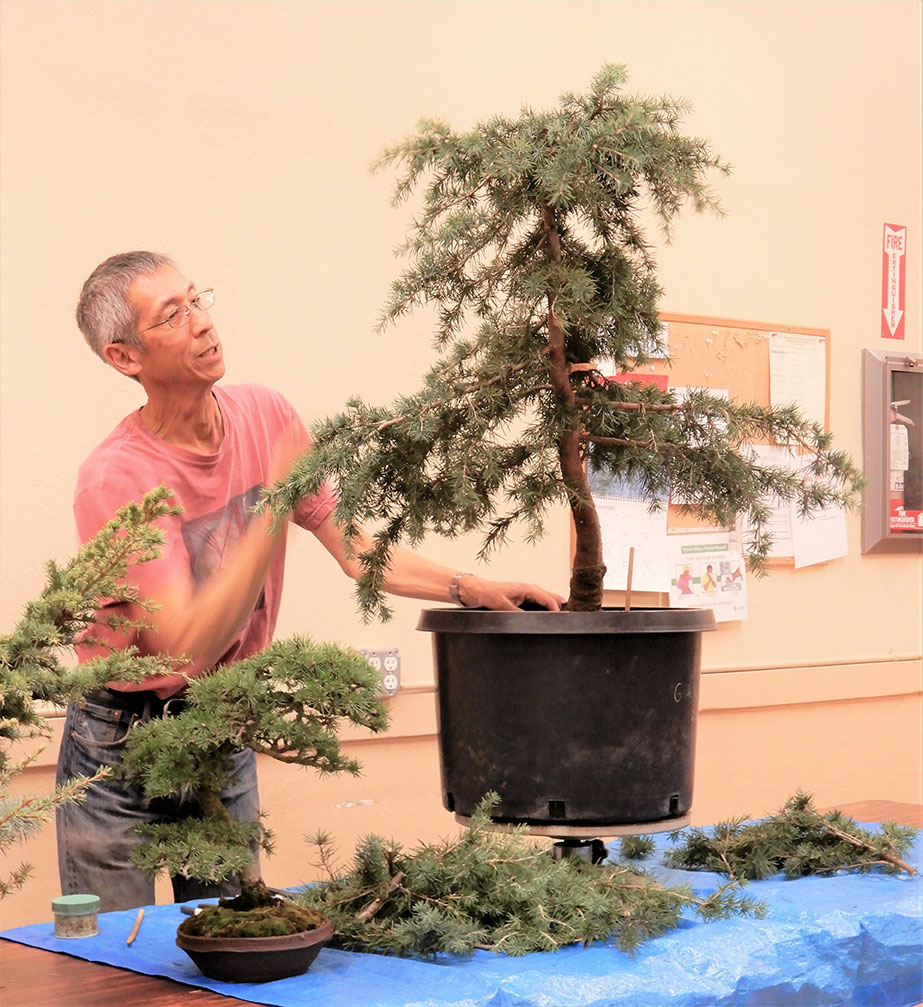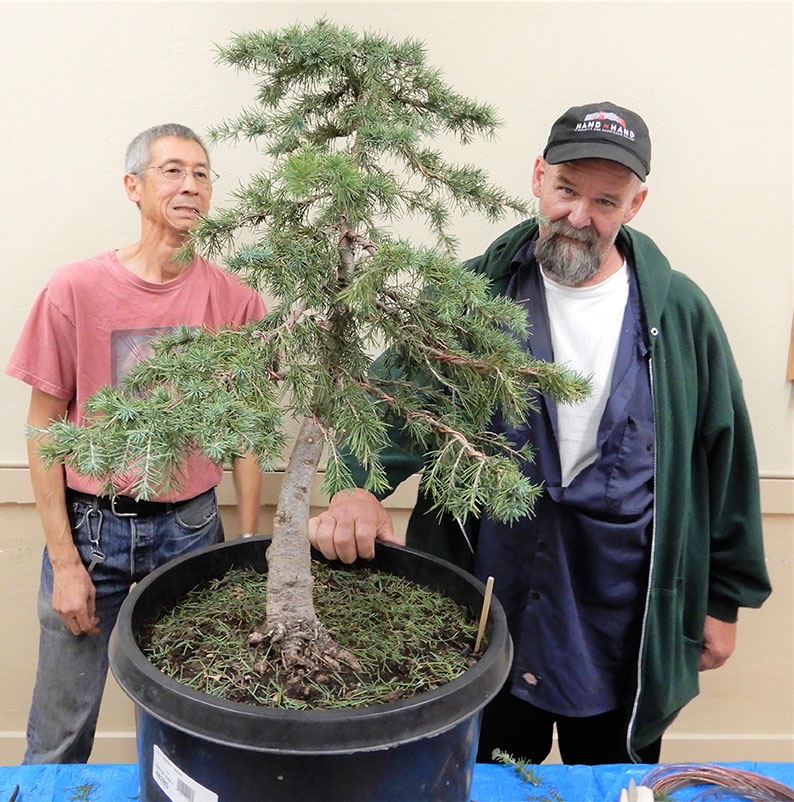The change from Autumn into Winter is a truly profound one in most of the world of nature, and we all know it by heart: The Harvest moon, golden Autumn afternoons, crisp chilly evenings with sweaters and hats, the first frost and the unexpected ice on the water in the morning. Here in the Mediterranean and desert-like microclimates that makes up so much of California, we only know about all that stuff because we read about it, maybe even saw pictures. It might as well be just a collection of stories and rumors calculated to make us glad, we live here.

As bonsai artists and enthusiasts, our gardens have a lot of advantages: No, or very few, freezes, and if we get a cold snap it’s almost always a brief unpleasantness, not a weeks-long, life threatening ordeal. No frozen roots, so a little bit of growth usually continues in spite of weaker sun and shorter days. But the changes are there to some degree, and are useful. Trees need rest too, to get ready for the Roller Derby riot of Spring. There are lots of things to do in the garden to help them along.
Take the wisteria and other tropical or semi-tropical trees out of the water bath where they spend their Summers. They now become a watering problem, needing a truly moist winter without being squishy wet.
Take the remaining leaves from trees which have yellowed or dropped seventy or eighty percent of their leaves, and do some light trimming or moderate wiring and set them all together in a dimmer part of the garden because they no longer need the lion’s share of the sunlight that the junipers and pines and other conifers will require. These bare trees now become a watering problem, needing to be kept from ever drying out but never wet.
In November and into December, evaluate the black and red pines for health and vigor to get a sense of how the summer buds that were selected have done and a little wiring might be helpful even if it’s just to provide a bit more light into the interior space of the tree and its back buds. White pines, mugo pines, and all other high-mountain types can be worked and cut and shaped and wired. But all the pines now become a watering problem, because they and the junipers and the rest of the conifers need to sit in the full sun all winter to take advantage of that ability, they have to remain slowly active even when it’s cold.
See a pattern here? Water is always an issue. Water is a harder problem to take care of in colder weather and the clues you need are harder to find and harder to read. Be careful, be observant, and be systematic. If there’s a question or an issue, don’t wait. Contact someone in a bonsai club who has healthy trees under their care, and get help.
Some growers in warmer climates fertilize all year, usually with low-number fertilizers like Bloom 5-5-5 or Gro Power 5-3-1. Others switch to 0-10-10 to keep the nitrogen out of the soil during dormancy. In every case the most successful growth seems to be with consistency, neither feast or famine, always feeding regularly and on time.
Keep an eye on the weather. In case of a cold snap, place pots under eaves, under benches and hedges and big trees, and wait for the warm up to put them in the sun again. Most plants can stand a few hours of freeze, and a few plants, like most azaleas, seem to like a bit of frost now and then, but why take a chance? And guess what? Extreme and/or prolonged cold becomes a water problem. Moist but not wet can be hard to accomplish in really cold weather.
Clean off all the benches and all the ground around to prevent overwintering pests. Scratch off the top half inch or so of soil and replace it with fresh soil for the same reason, and also to increase immediate water permeability to help with the (you know this by now) Water Problem.
Don’t neglect to do dormant spraying at the end of November, December and January. Use lime sulfur, dormant horticultural oil sprays and/or copper based dormant sprays like Lily Miller Microcop fungicide. Always follow label instructions regarding dilution rates and application carefully. Cover the soils so sprays and drips don’t get into the pots.
Go out in the garden some dark night with a flashlight. Everything looks so different; it might bring a new perspective. Go out on a bright moonlit night without a flashlight and just be with these living beings that depend on your faithful well-meaning attention for their daily existence. Go out in the dawn to experience a new day’s beginning with your partners in this ancient, compelling art, and you may find that the notes of hope heard there, however faintly, can become a chord of harmony and gratitude in your heart.
– Chris Ross
Autumn Haiku
Autumn passes through.
Summer burns in the treetops
For a few more days.
